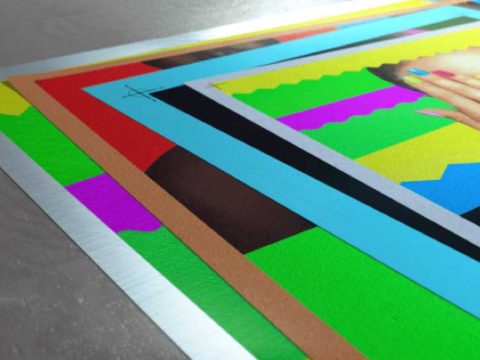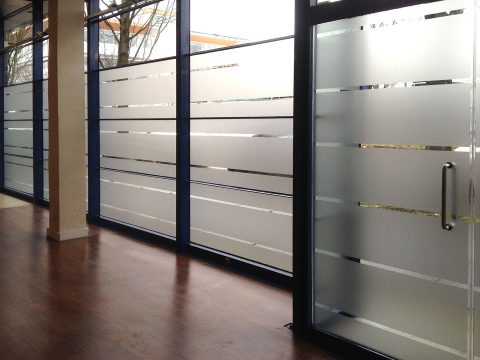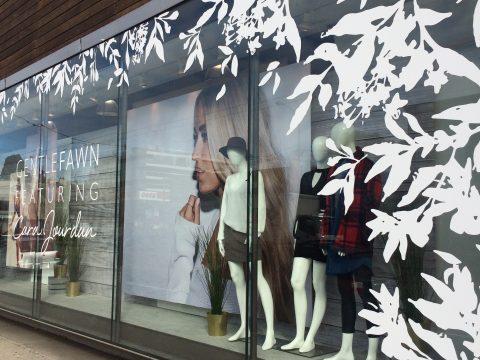How-To · FAQ · DIY Info
Preparing Files for PRINT
File Prep for Print
(& Print with Cut)
- We work from PDF files.
- Choose your art board dimensions: When creating your art work, choose the art board dimensions to match the dimensions you want the decal to be, include the desired white space. Ensure your design is properly placed on the art board.
- Work at full scale: When possible, work at actual size. Otherwise, work at 50% or 25%. Include this information in the file, such as in the file name.
- Outline fonts and create dielines: Embed/outline the fonts: When saving your file as a PDF, choose the option to embed the fonts. Even better send us a version of the file with all fonts outlined. If your print is cut to a custom shape you can create a dieline path in a seperate layer called "Cut".
- Check the resolution of the images you use: Bitmap, jpg, tiff and other rasterized images have a fixed resolution. This means that the larger they are printed, the lower the quality of the final output. That does not mean you should not enlarge an image, but you must be careful not to breach certain thresholds. For the purposes of most signage, you want to ensure that images have a resolution of >150 ppi. For wall murals we often work with lower resolutions
- Embed the images: During development of your art work, you can work with embedded or linked images. However, on the final copy you must “parse” or embed the images. Most software allows you to do this at the “Save as PDF” stage.
- Work in CMYK: Working in the CMYK colour mode provides the most consistent colours.
- Proof your art work in Adobe Reader: Proofing your files for resolution and image details is straightforward. After saving as PDF, open the file in Adobe Acrobat Reader. Do not use your application as the final check; use Reader. If you have designed at full size, then set your zoom to 100%. Scroll around and proof for resolution and fine detail. Reduce your view to check larger items, and “view fit to page” to ensure you have left adequate white space.
- Have your designer contact us with any questions about creating files.
Preparing Files for CUT VINYL Lettering and Graphics
File Prep for Cut Vinyl
- For Cut Vinyl, we work from PDF or .Ai files. Create your artwork in its actual finished size.
- All fonts must be outlined.
- Lettering should be at least 3/8" (1cm) tall: For ALL CAPS, 3/8" is the cap height. For text that includes lower case, 3/8" is the minimum x-height. A 2mm minimum line thickness creates the best results.
- The cutting path should be created as a continuous black stroke with no breaks or overlapping lines.
- For multi-coloured designs: each colour should be on it’s own layer. Name your layers with appropriate descriptions, such as the colour of the art on that layer.
- If possible, also provide an image of your finished design. This will illustrate your design intent and allow us to see what the final product should look like.
DIY Installation
How to Install Vinyl Graphics:
What you need:
- • Glass Cleaner or Rubbing Alcohol and Paper Towel or Lint Free Cloth
- • Measuring Tape
- • Spirit Level (optional?)
- • Masking Tape
- • Scissors
- • Plastic Card (Vinyl Squeegee or Credit Card) to smooth it down
- • Temperature above 7 ℃ (45 ℉)
Two ways to install vinyl graphics:
- Butterfly Hinge Method is used when you have a long thin graphic such as a line of text.
- Top Hinge Method is used when you have a graphic with a similar width and height.
- • Clean the application surface.
- • Find the correct placement of the graphic and level it
- • Lightly secure it with a few small pieces of masking tape.
- • Place a large piece of tape vertically across the middle of the graphic. This creates a “hinge” in the middle of the graphic. If possible place the tape across a break in the graphics or between letters. Secure it with a second piece of tape if needed.
- • Pick up one side of the graphic and peel the backing paper off and cut it off as close to the tape hinge as possible while holding the graphic away from the surface.
- • Now take deep breath. Slowly and evenly smooth the graphic down starting from the hinge and working your way out.
- • Once the first side is applied remove the tape hinge and you can repeat the process on the the other side.
- • Carefully remove the application tape.
- • Place a large piece of tape (or several) across the top of the graphic. Half on the graphic and half on the wall or application surface. This creates a horizontal “hinge” at the top of the graphic. Press the tape firmly onto the surface.
- • Flip the graphic up and carefully remove the backing. Flip it back down without letting it touch the surface.
- • Work slowly and evenly. Start from the top in the middle and smooth down the top edge. Carefully work your way down to the bottom.
- • Carefully remove the application tape.
First steps for both techniques:
Butterfly Method
Top Hinge Method
Print Proof
If required, we provide a dimensioned digital proof of the final layout. Please review carefully before approval, as this represents a contract of what we will provide to you. Additional costs may apply.




